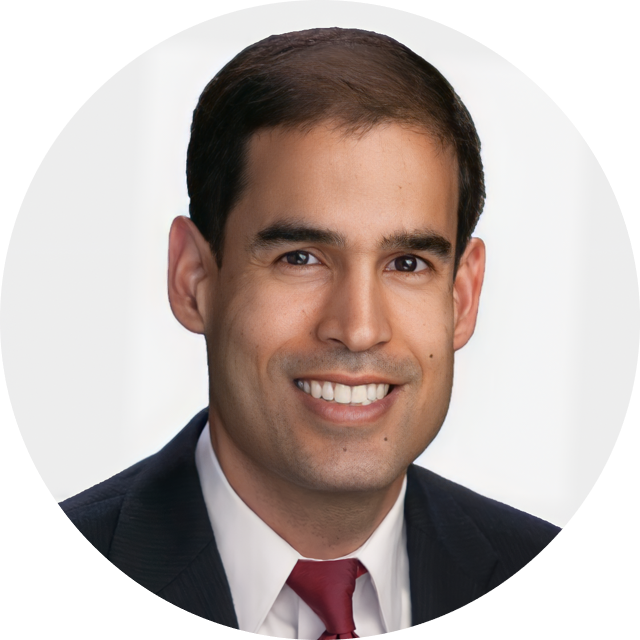Podcast: Special Topic – APLA


Joel Morales
Vice President, Polyolefins, America

Pablo Giorgi
Global Olefins

Luka Powell
Senior Research Analyst, Energy & FeedstockLuka Powell (00:15):
Welcome to the Olefins Weekly Wrap Up. Today is Friday, November 17, and I’m your host Luka Powell.
Pablo Giorgi (00:22):
And I’m Pablo Giorgi.
Luka Powell (00:24):
And together as Chemical Market Analytics, we recap the top events moving the ethylene and propylene markets over the past week. The design of this podcast is to complement the content from the North America Light Olefins Weekly service, otherwise known as the NALO Weekly.
Pablo Giorgi (00:41):
We have a new voice on the podcast this week. Welcome, Joel Morales, our polypropylene guru, and Vice President of Global Plastics and Polymers.
Joel Morales (00:52):
Thank you for having me, Pablo. It’s been a while actually, since I’ve been on the podcast. I didn’t know if I had done something wrong the last time, but I am very glad to be here today!
Luka Powell (01:05):
And welcome back to Pablo as well. So both of you were at APLA last week. How was it?
Pablo Giorgi (01:11):
Thank you. Thank you. Happy to be back. It was great talking to all the folks from the chemical industry. There’s so much to discuss.
Joel Morales (01:22):
Absolutely. Brazil was was excellent. I will say Sao Paulo’s traffic is pretty impressive as far as how long it takes to travel short distances, but the food, the people, always great to see our colleagues in the industry and can’t wait to go back.
Luka Powell (01:39):
Sounds incredible. And I have a lot of questions, so maybe we should dedicate this podcast to an APLA wrap up. It’s been a pretty turbulent year for the industry, especially given the geopolitical premiums and economic headwinds that we are seeing. What was the general outlook at APLA?
Joel Morales (01:56):
So I’ll start maybe real quick and just say that I think folks were aligned with the view that we’ve been given in the industry for quite some time now, and it’s a sobering view. It’s one of significant oversupply and polymers. And in terms of South America, I think they realized that they’re going to have to focus on their domestic markets and defend themselves against some very challenging global conditions where they’ll probably see more imports of polyethylene from the US and more imports of polypropylene from Asia. But overall, I think the atmosphere was positive and they’re looking at how they can best attack the trough of the market. So despite the conditions being challenging, I think people were pretty enthusiastic.
Pablo Giorgi (02:50):
Yeah, and I would add that Latin America has a lot of potential. There’s lots of opportunities as well especially in the long-term after we go through this trough and balance the global markets’ current oversupply. And the challenge is always to understand and plan for how to capture those opportunities. The folks were looking at how to survive in these next few years, like Joel said and how to try to leverage feedstock and other opportunities in Latin America after we go through this trough.
Luka Powell (03:37):
Maybe we could dive a little bit deeper into olefins and polyolefins. So Pablo, what’s the ethylene outlook looking like?
Pablo Giorgi (03:47):
Yeah, ethylene has a green outlook, I would say for the next few years. We’ve been having a lot of capacity overbuild, just this year we had a lot – around 10 million metric tons of global capacity starting up. While the demand growth is expected to be between 2 and 3 million metric tons and so; big oversupply operating rates decreasing globally. The good news, or the positive is that we are probably leaving the bottom of the cycle in terms of operating rates for ethylene. We expect 2023 to be that bottom at around 80% globally and then start increasing next year onwards as we have more demand growth than capacity growth. Now, there’s a big question mark on new projects in China and how will they follow through or not with them.
Pablo Giorgi (05:01):
So that’s where the market kind of has their eyes on, and we have our eyes on, to see if some of the new announcements in China are built or not. But I think moving forward the situation is going to improve. The flip side is that it’s going to improve slowly because the size of the overbuild is enormous. And probably we’re going to have not only the increasing demand to balance the market, but also some rationalization as the low margins persist for a few years, and not all market participants are going to be able to go through it. And going back to Joel’s point: I think for the next few years, companies are going to be be in survival mode to go through this trough.
Luka Powell (05:57):
So it seems like there is sunlight at the end of the tunnel for ethylene, but what about propylene?
Pablo Giorgi (06:04):
Well, propylene is a very similar story in terms of oversupply. The main difference is that the overbuild has not stopped, it’s not finished yet. So we have even more capacity being started up this year and next year, a little bit more than 11 million metric tons this year, and a little bit less than 10 million metric tons next year in 2024. In both cases it’s way more than capacity, and for demand increase, this year’s forecast to be around 2 million metric tons. Last year’s demand actually didn’t increase at all. For next year, we have a more normal year in terms of growth. It seems a lot compared to this year and last year, but it’s more of a normal average average year with around four to five million metric tons of demand growth.
Pablo Giorgi (07:05):
But again, capacity is going to grow more. So we’re going to continue to reduce operating rates. We have not reached the bottom globally on propylene. In the case of propylene, there is an interest in dynamics, which is most of this new capacity is in Asia/Northeast Asia, and specifically in China. And most of this is on purpose, especially PDHs (Propane Dehydrogenation Units). We are starting to see dynamics of propylene very linked to what happened in the propane markets and vice versa, depending on which one is more oversupplied or in the future tighter market. Those markets are going to be very connected. To put things into perspective, propylene is adding a little bit more than 11 million metric tons this year of capacity in a market that globally is around 120 million metric tons per year.
Pablo Giorgi (08:09):
And ethylene is adding less around 10 million metric tons this year of new capacity starting up in a market that is 180 million metric tons per year. And so propylene is not only adding more capacity, it’s adding more capacity in a market that is significantly smaller. Therefore, you know, that gives you an idea of just how oversupplied their market is going to be in comparison with ethylene. So we expect things to get better in the next few years in ethylene slowly and it’s going to take a few years, but, surely improving versus in propylene.We’re still going to see a very grim , a very bad situation for the industry in terms of margins in this coming year until things start improving in the following years.
Luka Powell (09:06):
And what about polyolefins? Joel, could you maybe speak about that a little bit?
Joel Morales (09:12):
Sure. So polyolefins are again, it’s a challenging forecast for sellers. It’s a period of time in which margins are going to approach cyclical lows. We’ll see local producers focus on selling into their local markets, where in the case of Brazil and Argentina, they do have tariffs on imports, which essentially guarantees a return on your domestic sales for the local producers. The big news in the industry was right before we went down there, ADNOC, the state oil company out of the United Arab Emirates announced that they were modifying their bid for Braskem. We don’t want to spend too much time speculating on the likelihood there’s been a lot of suitors to try to buy Braskem over the last, oh gosh, it’s been a long time, many years. It’s for one of the shareholders, which was formerly Odebrecht, now Novonor. So it is specifically for that share.
Joel Morales (10:12):
There’s a lot of feeling in in the country talking to the local businesses that this finally may actually be an offer that is accepted. So a lot of talk about that and what it would do for Braskem. I’d imagine the injection of that company’s influence and pocketbooks would probably be a good thing for the company. I don’t think it fixes all the competitive issues that the plants of Braskem have in North America, specifically to polypropylene and Europe, specifically to polypropylene. But that was pretty exciting. I’d say overall, the industry growth there, somewhat limited, in the next 10 years for polyethylene. We have calculated average annual growth rates of around 2.4% and 2% for polypropylene. The growth is not somewhere like in India or like what we’ve seen in China, but their population is growing. Over time there will be more consumption. I think producers are really going to try to be innovative and focus on trying to minimize the imports into their regions and focus on their domestic markets.
Luka Powell (11:26):
And I guess to delve a little bit deeper into some of that, what opportunities and perspectives are we seeing for Latin America specifically, Pablo?
Pablo Giorgi (11:37):
Yeah. Okay, let me start. And I think from an olefins and and feedstocks perspective, we really need to look upstream into the feedstocks for the petrochemical industry coming from the oil and gas and refining industries, and there’s a lot of potential in Latin America. We have huge investments actually already going on and production increasing in Argentina. Shale formations and in pre-salt offshore crude production in Brazil. Just this year, I think Brazil has increased 500,000 barrels a day of crude oil production, mostly from offshore pre-salt fields. And that has a huge potential of allowing petrochemical industry investments using some of the products that come out of the ground or the bottom of the ocean, specifically in the case of associated gas on those two countries and those formations that’s rich in ethane.
Pablo Giorgi (12:58):
And there is talks of both potential investments, but also in Argentina there’s talks about an ethane exported terminal in Bio Blanca. That could be actually a good opportunity to instead of building the ethane export terminal because it’s so expensive to ship ethane anywhere in the world, process it into ethylene polyethylene and if it needs to be exported, it’s much cheaper to do that than exporting ethane. That’s the model that the US has used to make use of shale in the Permian and other regions: west Texas, New Mexico, and all the crude production associated gas ethane. And we have been exporting a lot of polyethylene. There is a lot of opportunity to do the same in Latin America as they have all these feedstock availability particularly associated with those two oil and gas producing regions. There is a lot of opportunity in years to come in Latin America.
Joel Morales (14:16):
In terms of South America, again, I’m not as bullish for the producers of polyolefins only because the local growth, which I think will be their primary focus, is not again, like somewhere like India where we’re growing upper single digits. Population is growing, so there will be plastic consumption. The region has already been dealing with some plastic bans, and the sustainability push is also an issue for consumption. It’s not to the level that we’ve seen in Europe, but there is a drive to minimize, and we should probably globally have a common sense of minimizing consumption in general. But the industry is going to have to really tighten its belt, look to optimize efficiencies where they can product mix all the things that you do when you are dealing with the bottom of a cycle. So there are tariffs in place to protect margins. The ADNOC announcement is pretty exciting, but producers know that the next few years will be some of the most challenging years that this industry has seen in quite some time, probably since the last Great Recession of the end of 2008. I think people are looking for opportunities, looking for changes in the forecast. But the takeaway is we need to be smart about our business because there are some tough times ahead.
Luka Powell (15:55):
Well, I’ll be sure to attend APLA next year.
Joel Morales (16:01):
And with that, let’s wrap up the Wrap Up.
Pablo Giorgi (16:05):
Join us at the upcoming Global Plastics Summit on February 27-29 in Houston. Registration has opened, so don’t miss out.
Luka Powell (16:21):
Don’t forget to subscribe to our podcast on SoundCloud, Spotify, apple, or Google Podcasts or wherever you get your podcasts. And give us a like or leave a review if you enjoy it. If you have any questions or if you’d like us to cover something more specific, you can send us an email.
Until next time.

